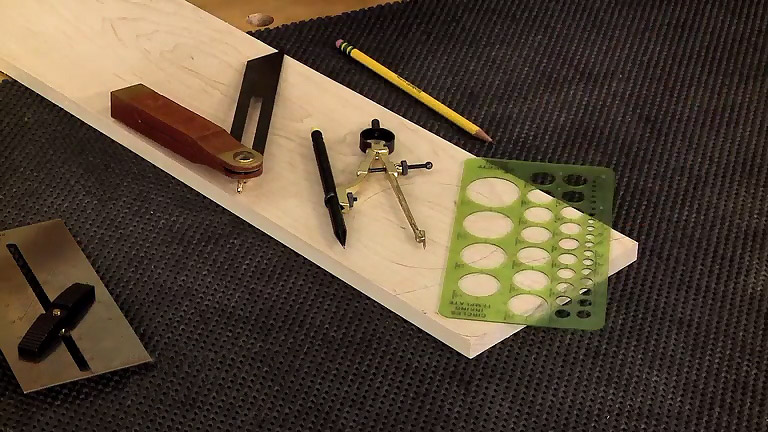Using a jig saw sounds simple. Turn it on and push it through the wood. But often, the results can be pretty rough. A lot of times the cut edge is splintered and when I go around a curve, the blade bends and the saw bounces around like a jackhammer. It’s easy to just think of a jig saw as a “roughing” tool. But you don’t need to settle for sloppy cuts. I found a few tips and techniques that will work to improve the cuts you make with any kind of jig saw. And, best of all, none of them will cost a lot or take much time.

Many saws feature an orbital cutting action to power through construction lumber. In addition to the blade moving up and down, the orbital motion adds a “kick” to the blade on the upstroke. When I’m using high-quality plywood or cutting curves in hardwood, I turn off the orbital action.
Here are two blades that I keep on hand for smooth cutting. The blade I use most often is an up-cutting blade with 12-16 teeth per inch (left blade). Because of this cutting action, any tearout on the cut is going to be on the top face as the teeth exit the workpiece. So it’s a good idea to place the good face down.
When I need to cut tight curves or if I need both faces of a plywood panel to look their best, I switch to a different blade. This blade has 20 teeth per inch and they point straight out. These teeth have a slicing action that leaves both faces clean.

As you’re cutting with either of these blades, you’ll notice they have a natural cutting speed. This is the amount of material the blade will remove with light pressure on the saw. I know it’s tempting to push the saw full-speed ahead and get the cut done faster. But, if you relax and let the blade do the cutting, the cut edge will be much smoother.
The small size of a jig saw makes it seem natural to hold it in one hand and the workpiece with the other. But you’ll find the saw is easier to control if you hold it with two hands. Then, to get the best control for the turn, I hold the saw with only one hand directly over the blade. This seems like the opposite of what I just, but in this position, you can better pivot the saw without pushing it to the side. As the saw comes out of the turn, you can go back to a two-handed grip.

To help prevent tearout in the top face of the workpiece, you can apply painter's tape to the cutline. The tape holds the fibers in place and keeps them from splintering.











